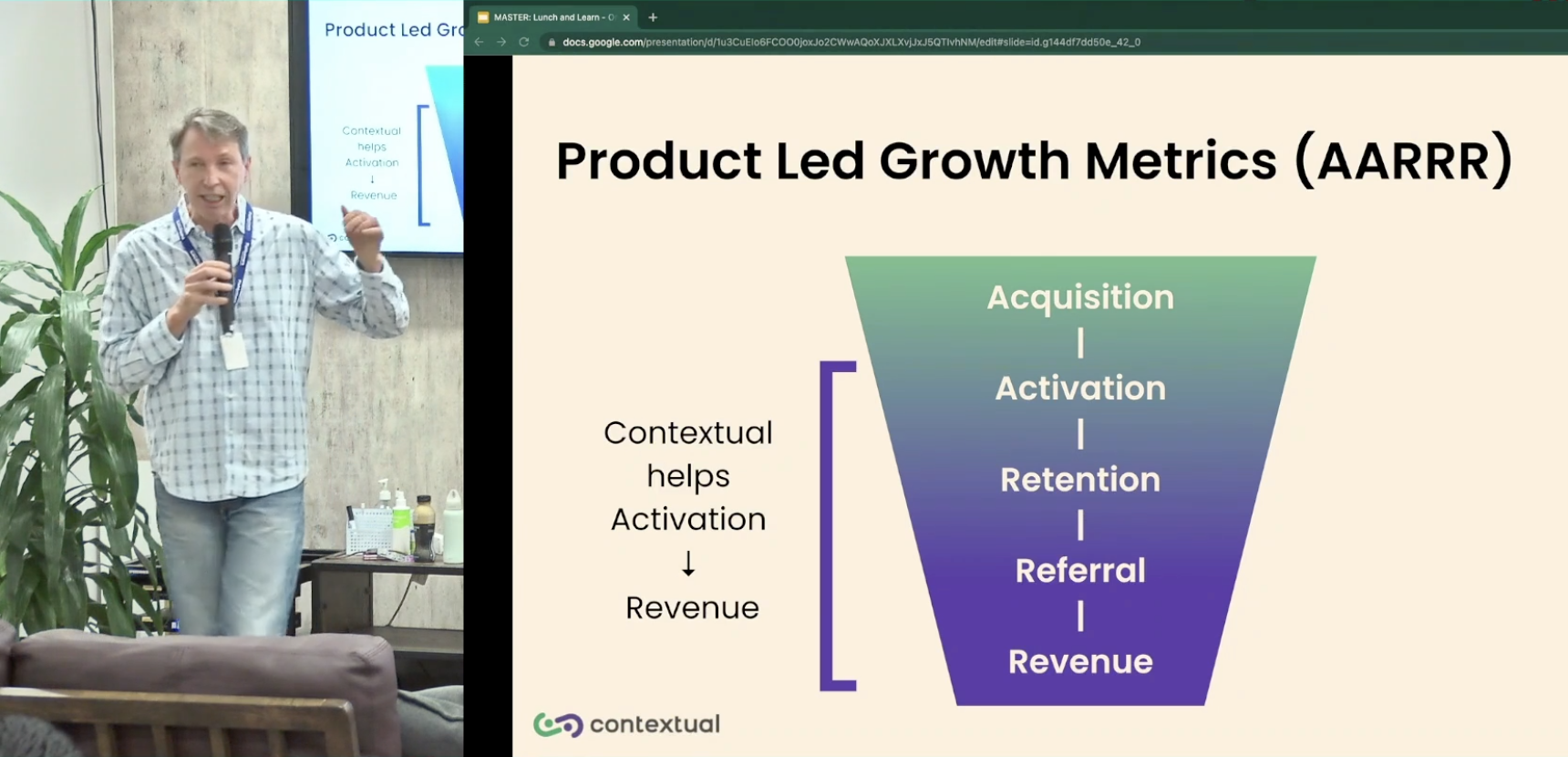By David Jones Founder and CEO Contextual
The wave of Product Led Growth has revolutionized the industry in recent years. When discussing Product Led Growth (PLG), it is often compared to “sales-led” approaches, the dirty little secret is that many SaaS companies presenting as PLG are in reality Sales-Led.
In addition to Product-Led and “sales-led” approach, other prevalent strategies include marketing led, customer led, engineering led, and service led. However, in this presentation, I dare to suggest that most PLG software products rely on the tried-and-true “Pirate Metrics” (AARRR) framework. By examining key elements of PLG, we can always reframe them in terms of AARRR and their correlation to the user journey.
To summarize, Pirate Metrics represent a funnel for fostering deeper engagement. Typically, ownership of these metrics lies with Product Management, Customer Success, and Growth teams, encompassing interconnected phases such as:
- Acquisition: Typically owned by marketing is the user journey up to registering with your product and logging in Attracting users through various channels and acquiring them as customers.
- Activation:. Is discussed extensively in this video. Activation is the moment where the user extracts value in the product. This can also be the first moment the user completes an action such as filling out their profile, inviting their co-workers to sign-up for the app or completing a transaction. Activation is guiding users to experience the core value of the product and ensuring a successful onboarding process.
- Retention: Encouraging users to continue using the product and cultivating long-term engagement. This can be measured in revisits to the application, typically measured in Daily Active Uses, average session length and custom (per application) engagement metrics. Of course an important metric might be (one or recurring) monetary transactions.
- Referral: Harnessing the power of satisfied users to advocate for the product and refer others. This includes activities where your user is inviting and engaging other users in a virtuous circle that grows Activation and Retention. This is a key part of Product Led growth where marketing and acquisition costs are significantly subsidised (or eliminated entirely by harnessing network effects of the users in the App). Whilst B2C apps like social networks are poster-children for network effects, B2B apps like Atlassian have been well documented as having a growth flywheel based on this strategy.
- Revenue: There is no growth without revenue! As can be seen, this can happen at one or more points elsewhere in AARRR and single or multiple times. Optimizing monetization strategies to drive revenue growth and maximize customer value is the ultimate measure of success
So we can see that PLG is very much supported by a product design that rolls up these key User Journey components. This talk tracks the journey on a timeline. By leveraging the power of contextual walkthroughs, contextual user onboarding, contextual mobile tooltips, and a comprehensive digital adoption platform, businesses can enhance their product adoption and effectively implement PLG strategies.
Webinar: How to Automate Product-Led Growth in APAC
With MeshAI
Tue 29th September 2022, 12:00 pm SGT (2:00pm AEST)
- How Product Led Growth is transforming in 2022
- Evolving your software product’s PLG model
- Automating PLG the who and how
- Product-Led Go-To Market strategy
- The PLG Automation analytics, onboarding and communications

